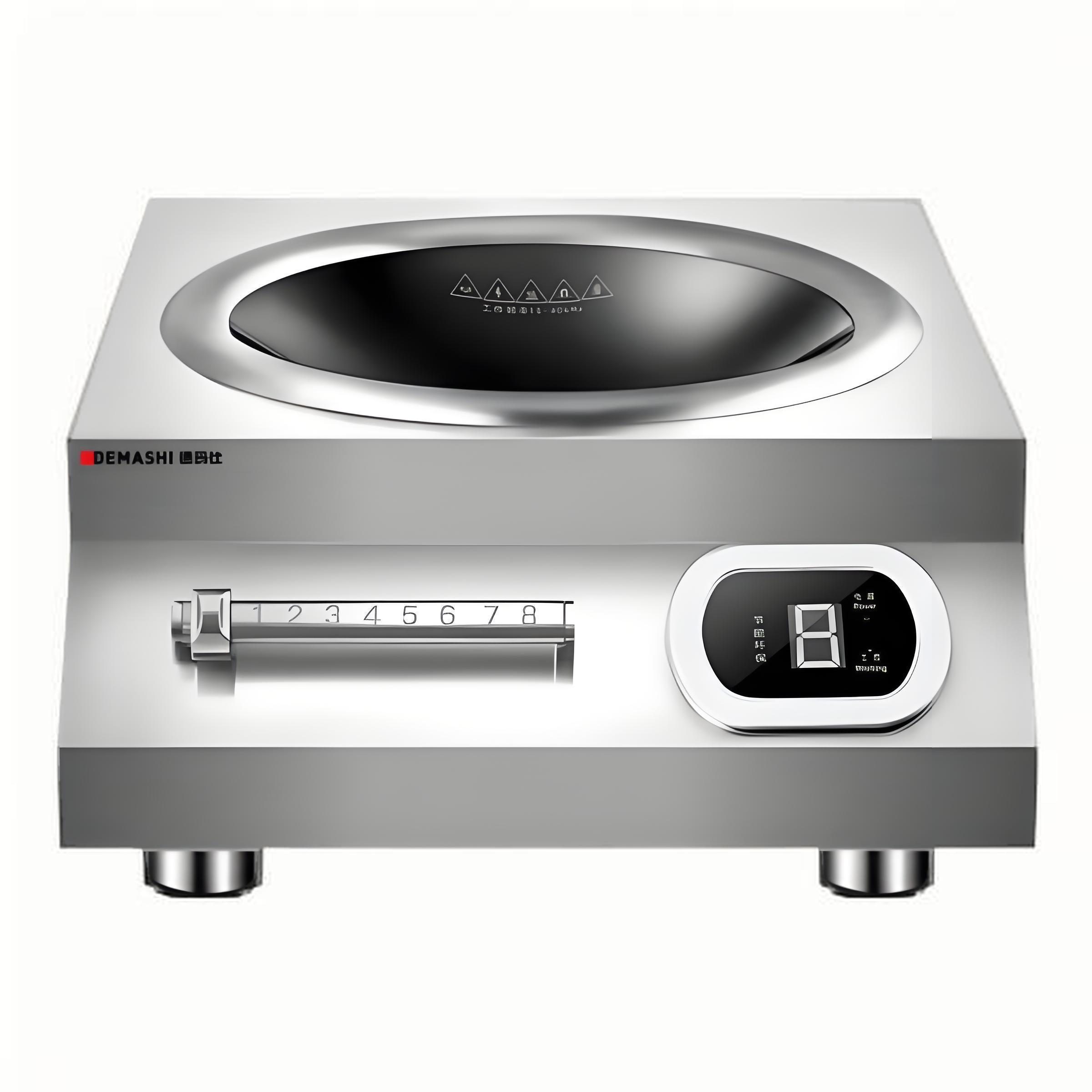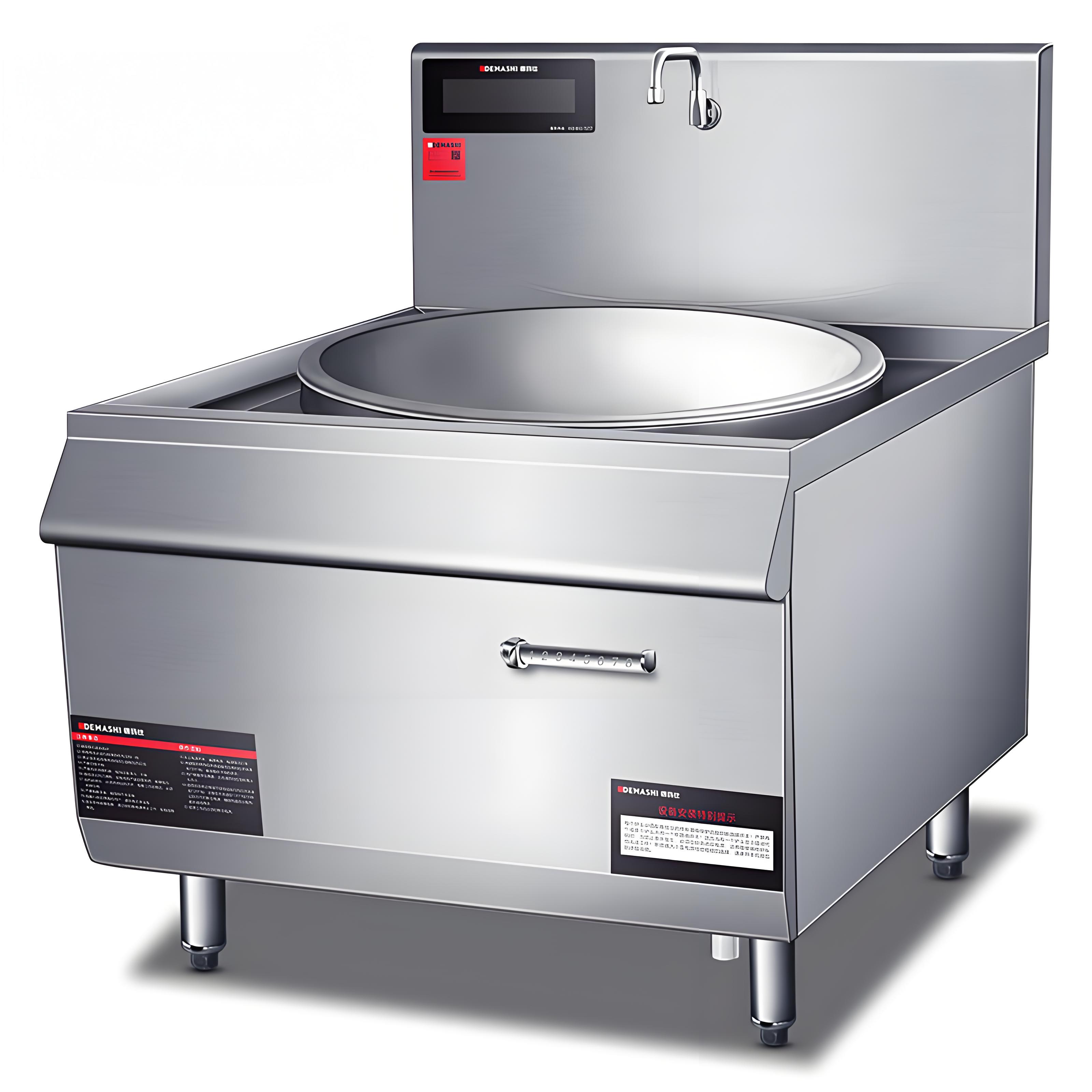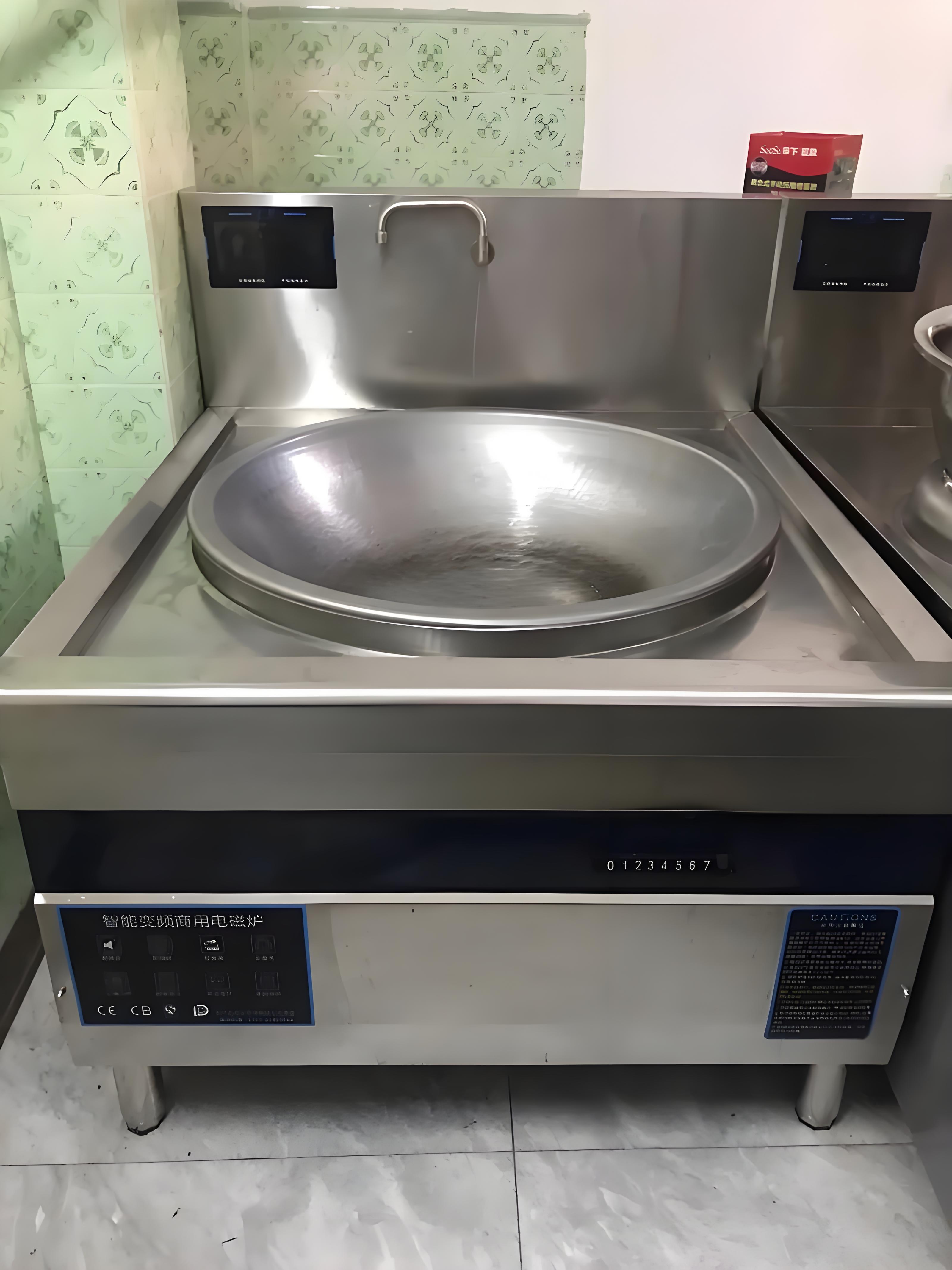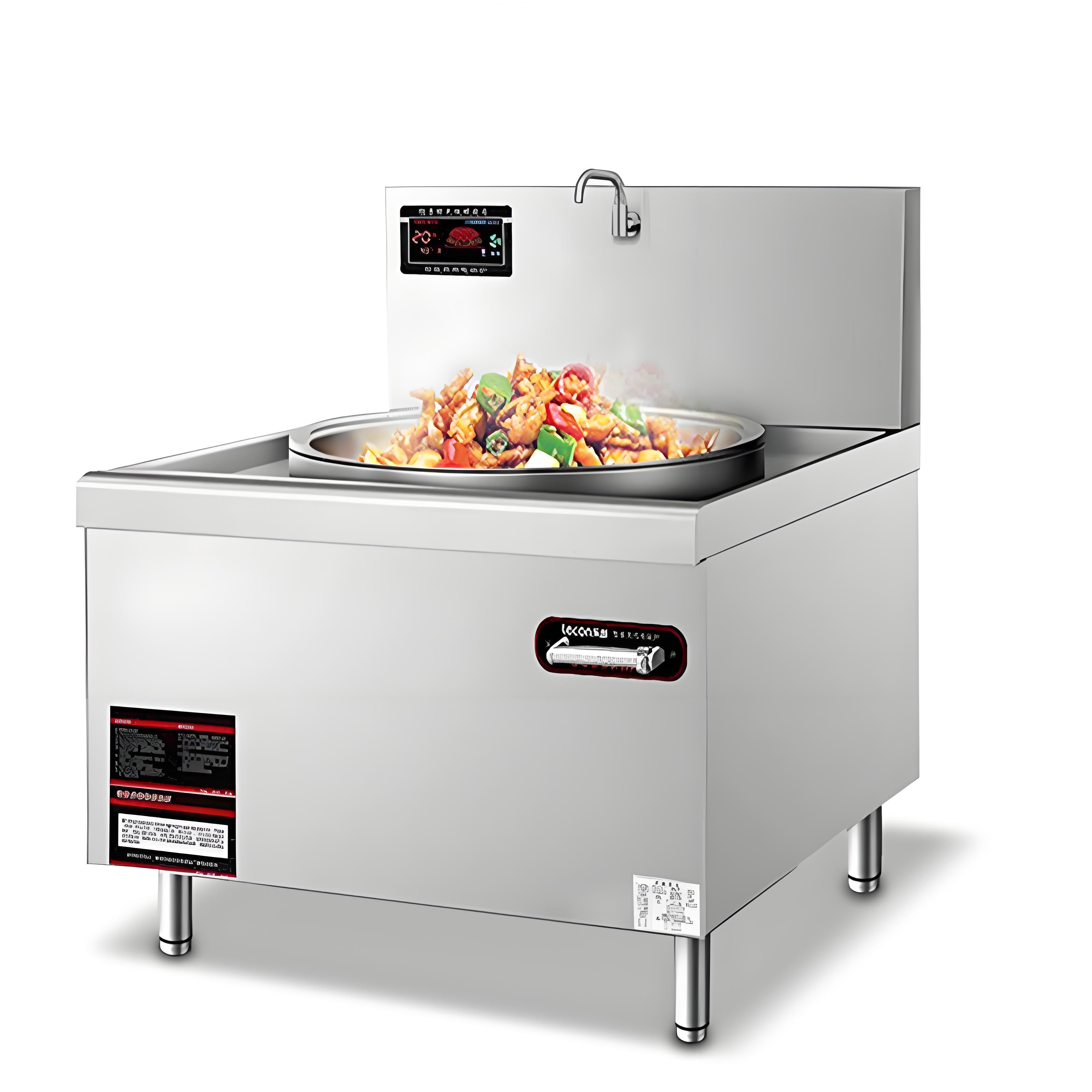After years of working in the catering equipment industry, I’ve lost count of how many times restaurant owners, chefs, and procurement managers have asked me, “What kind of commercial induction cooker is best?” or “How do I choose the right one?” These questions aren’t just about picking a piece of equipment—they’re about ensuring your kitchen runs smoothly, your dishes taste great, and your business stays profitable. As someone who’s seen kitchens of all sizes, from cozy noodle shops to bustling hotel banquet halls, I’m here to share practical advice on selecting the perfect commercial induction cooker. Let’s dive in and explore what to look for, step by step, so you can make an informed decision.
1. Why Choosing the Right Commercial Induction Cooker Matters
Commercial induction cookers are the backbone of many modern kitchens, especially in restaurants where efficiency, safety, and consistency are non-negotiable. Unlike traditional gas stoves, induction cookers use electromagnetic fields to heat cookware directly, offering faster heating, precise temperature control, and energy savings. But with so many options—different powers, sizes, and features—choosing the wrong one can lead to wasted money, inefficient cooking, or even electrical issues.
I remember visiting a small hot pot restaurant that had just opened. The owner had bought a high-powered induction cooker thinking it would impress customers, only to find their electrical system couldn’t handle it. They had to replace it with a more suitable model, costing them time and money. Stories like this are why I’m passionate about helping people choose wisely. Let’s break down the key factors to consider.
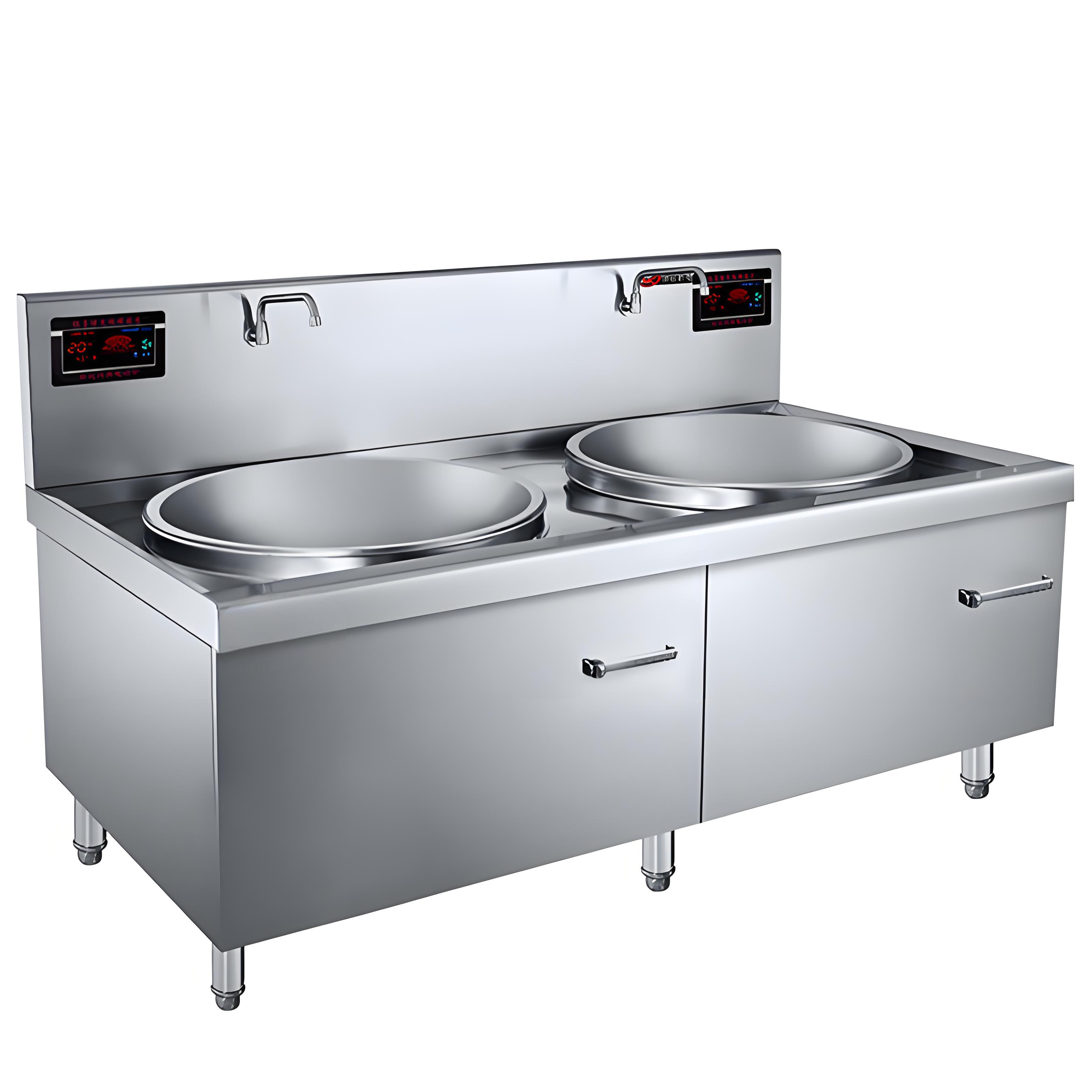
2. Key Factors in Choosing a Commercial Induction Cooker
To pick the right induction cooker, you need to think about your kitchen’s specific needs. Below, I’ve outlined the most important factors to guide your decision.
2.1 Power Rating
The power rating (measured in kilowatts, kW) determines how fast the cooker heats and how much it can handle. Commercial induction cookers typically range from 3kW to 35kW, unlike household models (1.5kW to 2.2kW). Here’s a quick guide:
3kW – 5kW: Ideal for small cafes or fast-food joints with light cooking needs.
8kW – 12kW: Suits medium-sized restaurants with frequent cooking.
15kW – 20kW: Perfect for large restaurants or hotels with high-volume stir-frying or stewing.
25kW – 35kW: Best for central kitchens or factory canteens handling massive cookware.
Choose power based on your menu and customer volume. For example, a Sichuan restaurant needing rapid stir-frying should aim for 12kW or higher, while a soup-focused eatery might only need 5kW to 8kW.
2.2 Size and Burner Configuration
Induction cookers come in single-burner, dual-burner, or multi-burner designs, with sizes ranging from compact countertop models to large freestanding units. Consider:
Kitchen space: Measure your available counter or floor space. A small bistro might only fit a single-burner 3kW unit, while a banquet kitchen could accommodate a dual-burner 20kW model.
Cooking volume: High-turnover restaurants benefit from multi-burner units to cook multiple dishes simultaneously.
2.3 Electrical Requirements
High-power induction cookers demand robust electrical setups. Single-phase 220V systems support up to 5kW, while three-phase 380V is needed for 15kW and above. I’ve seen too many kitchens buy a 20kW cooker only to discover their wiring can’t handle it. Always check:
Power supply type (single-phase or three-phase).
Cable thickness (e.g., 10mm² for high-power models).
Circuit breaker capacity.
If unsure, consult an electrician before purchasing.
2.4 Cookware Compatibility
Induction cookers only work with ferromagnetic cookware (e.g., cast iron or stainless steel). Ensure your existing pots and pans are compatible, or budget for new ones. Also, check the cooker’s coil size—it should match your cookware diameter for efficient heating.
2.5 Control and Features
Modern induction cookers offer features like digital temperature control, timers, and smart power adjustment. These are game-changers for busy kitchens. For instance, precise temperature control is a must for Cantonese slow-cooking, while timers help with repetitive tasks like steaming.
2.6 Durability and Build Quality
Commercial kitchens are tough environments, so look for cookers with stainless steel bodies, reinforced glass-ceramic surfaces, and effective cooling systems. A well-built cooker lasts longer and handles continuous use without overheating.
2.7 Energy Efficiency
Induction cookers are generally more energy-efficient than gas stoves, but some models stand out with smart power regulation that adjusts output based on cookware size. This can save significant electricity costs, especially for high-power units.
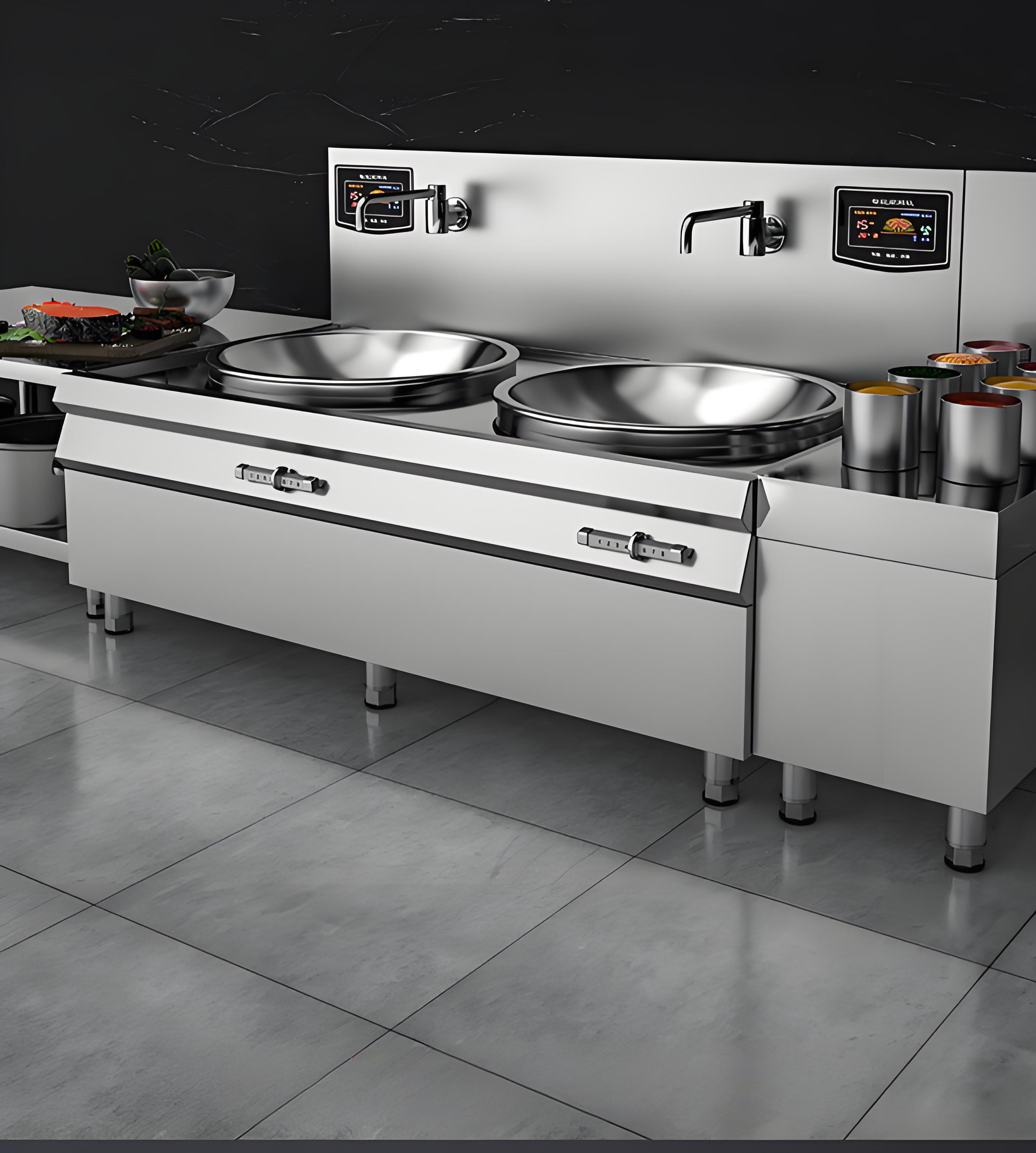
3. Comparison of Commercial Induction Cooker Types
To make your decision easier, I’ve created a table comparing different types of commercial induction cookers, their features, and ideal use cases:
|
Type |
Power Range |
Size |
Pros |
Cons |
Best For |
|---|---|---|---|---|---|
|
Countertop Single-Burner |
3kW – 8kW |
Compact (e.g., 40x50cm) |
Affordable, space-saving, easy to install |
Limited capacity, single dish at a time |
Small cafes, food trucks, light cooking |
|
Countertop Dual-Burner |
8kW – 15kW |
Medium (e.g., 80x60cm) |
Handles multiple dishes, moderate power |
Requires more space and stronger wiring |
Medium restaurants, chain eateries |
|
Freestanding Single-Burner |
15kW – 25kW |
Large (e.g., 100x80cm) |
High power, suits large cookware |
Expensive, needs three-phase power |
Large restaurants, banquet kitchens |
|
Freestanding Multi-Burner |
20kW – 35kW |
Extra-large (e.g., 150x100cm) |
High capacity, ideal for mass cooking |
High cost, complex installation |
Central kitchens, factory canteens |
This table should help you narrow down options based on your kitchen’s size, budget, and cooking demands.
4. Step-by-Step Guide to Choosing a Commercial Induction Cooker
Based on my experience helping clients, here’s a practical, step-by-step process to pick the right induction cooker:
Step 1: Assess Your Kitchen’s Needs
Menu: What dishes do you cook? Stir-frying needs high power (12kW+), while steaming or simmering can use lower power (5kW-8kW).
Volume: How many customers do you serve daily? High-turnover restaurants need multi-burner or high-power models.
Peak hours: Will you need to cook multiple dishes at once? If so, consider dual- or multi-burner units.
Step 2: Measure Your Space
Measure your kitchen’s available counter or floor space. Ensure there’s enough room for the cooker and proper ventilation (at least 10cm clearance around the unit).
Step 3: Check Electrical Infrastructure
Confirm your kitchen’s power supply (single-phase or three-phase) and wiring capacity. For high-power models, budget for potential electrical upgrades, which can cost $500-$2,000 depending on complexity.
Step 4: Set a Budget
Commercial induction cookers range from $200 for basic 3kW models to $5,000+ for advanced 35kW units. Factor in long-term electricity costs—higher power means higher bills. For example, a 20kW cooker running 8 hours daily at $0.15/kWh costs $24/day.
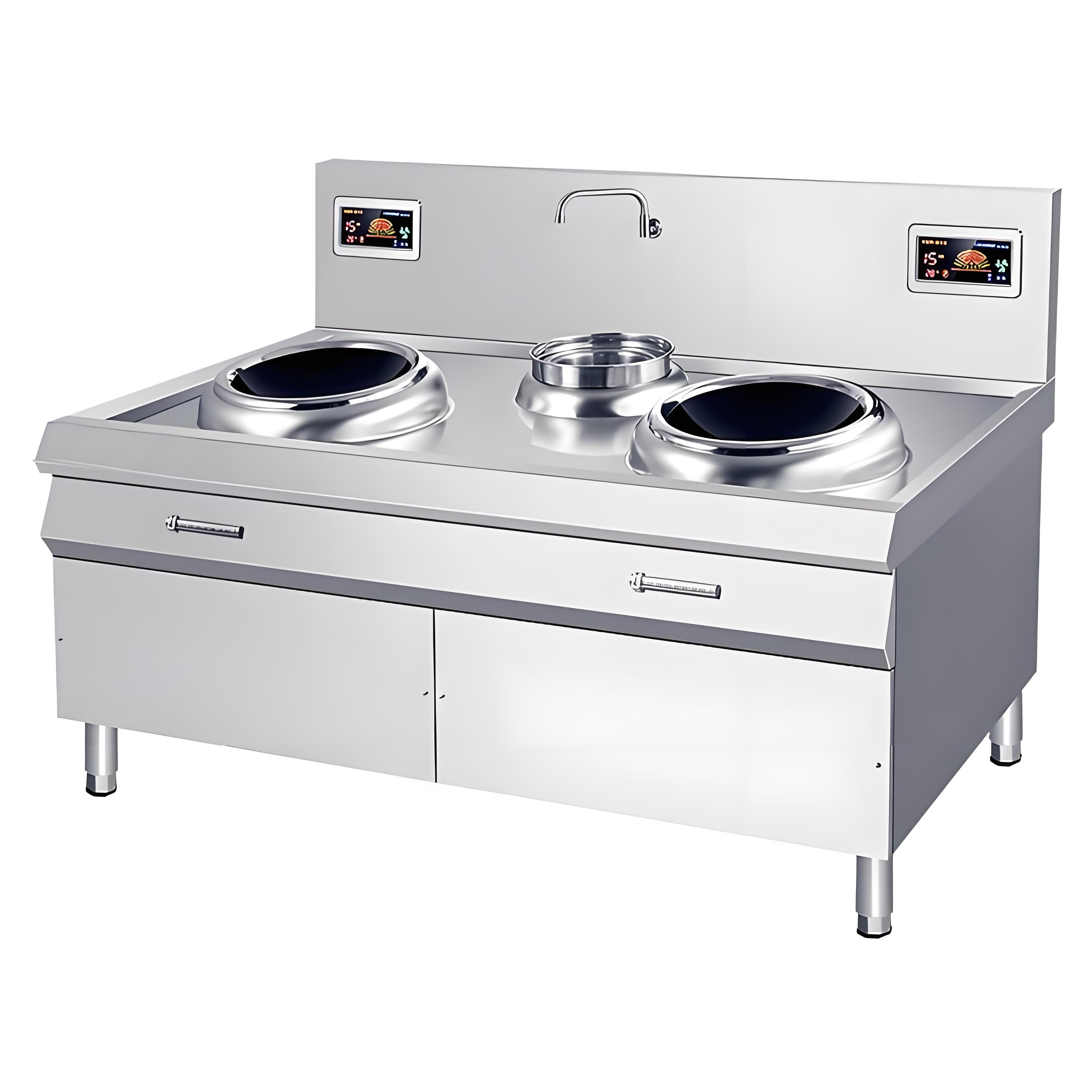
Step 5: Test Cookware Compatibility
Test your existing cookware with a magnet—if it sticks, it’s induction-compatible. If not, budget for new pots and pans (e.g., $50-$200 per piece for commercial-grade cookware).
Step 6: Compare Features
Look for features like smart temperature control, timers, and overheat protection. These improve efficiency and safety, especially in high-pressure kitchens.
Step 7: Research Suppliers
Choose reputable suppliers with good after-sales support. Ask about warranties (1-2 years is standard), spare parts availability, and installation services. If possible, visit their showroom to test models.
Step 8: Request a Demo
Before finalizing, ask for a live demo or trial. This lets you see how the cooker performs with your recipes and cookware.
5. Common Mistakes to Avoid
Over the years, I’ve seen restaurant owners make the same mistakes when buying induction cookers. Here are the top pitfalls to steer clear of:
Buying Based on Price Alone: Cheap models often lack durability or precision, leading to frequent repairs. Invest in quality for long-term savings.
Ignoring Electrical Limits: A 20kW cooker won’t work on a single-phase 220V system. Always verify your kitchen’s electrical capacity.
Overlooking Cookware Needs: Non-compatible cookware renders the cooker useless. Test or replace pots before buying.
Skipping After-Sales Support: Choose suppliers with reliable maintenance services. A broken cooker can halt your kitchen for days.
Choosing Overpowered Models: A 25kW cooker for a small cafe is overkill, spiking electricity bills unnecessarily.
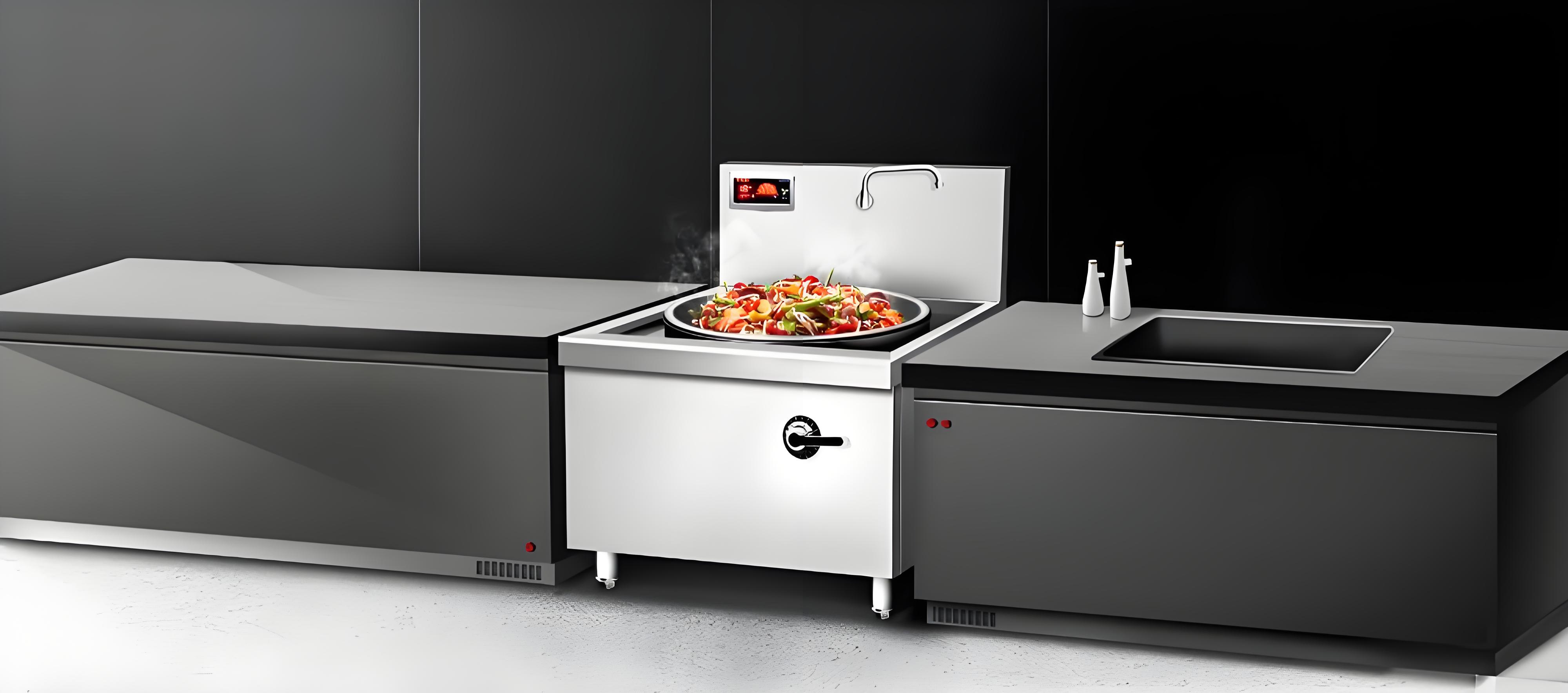
6. Real-World Examples
To illustrate how to apply these principles, here are two cases from my experience:
Case 1: Small Noodle Shop
A noodle shop in a busy market served 50-70 customers daily, mainly boiling broth and blanching noodles. They had limited counter space and single-phase power. I recommended a 5kW countertop single-burner model, compact and efficient. It handled their needs perfectly, and the owner saved on both equipment and electricity costs.
Case 2: Hotel Banquet Kitchen
A hotel with a 200-seat dining hall needed to prepare large-scale stir-fries and stews for banquets. Their kitchen had three-phase power and ample space. We installed two 20kW freestanding single-burner cookers for stir-frying and a 12kW dual-burner unit for simmering. The setup boosted efficiency during peak events, and the smart controls ensured consistent dish quality.
These examples show that the right choice depends on your unique setup and goals.
7. Future Trends in Commercial Induction Cookers
The industry is evolving fast, and induction cookers are getting smarter. According to a 2024 Catering Equipment Industry Report, key trends include:
AI-Driven Cooking: Some models now use sensors to adjust power and temperature automatically, reducing chef workload.
Energy-Saving Tech: New cookers optimize power usage, cutting electricity costs by up to 20%.
Compact High-Power Designs: Manufacturers are creating smaller units with 15kW+ power, ideal for space-constrained kitchens.
These innovations mean future cookers will be more versatile, helping restaurants save time and money.

8. Frequently Asked Questions
Here are answers to common questions to help you make a confident choice:
1. What’s the most important factor when choosing a commercial induction cooker?
It depends on your kitchen, but power rating and electrical compatibility are critical. Match power to your cooking needs and ensure your wiring can support it.
2. Can I use household cookware on a commercial induction cooker?
Only if it’s ferromagnetic (test with a magnet). Commercial cookware is preferred for durability and efficiency.
3. How much does a good commercial induction cooker cost?
Prices range from $200 for basic 3kW models to $5,000 for high-end 35kW units. Mid-range 8kW-15kW models typically cost $500-$2,000.
4. Do commercial induction cookers save energy compared to gas stoves?
Yes, they’re up to 90% efficient (vs. 40% for gas), as they heat cookware directly. Smart models can further reduce costs.
5. How do I maintain a commercial induction cooker?
Clean the surface daily, avoid water seepage, and check cooling fans regularly. Schedule professional maintenance every 6-12 months.
9. Closing Thoughts
Picking the right commercial induction cooker can feel daunting, but it’s all about understanding your kitchen’s needs and doing your homework. Whether you’re running a small cafe or a large banquet hall, the perfect cooker is out there—one that fits your space, budget, and cooking style. My biggest tip? Take your time, test models, and work with a supplier you trust. A well-chosen cooker will save you headaches, boost efficiency, and keep your customers coming back for more.
If you’re still unsure or have specific questions about models, installation, or maintenance, drop me a line. I’m happy to share more insights from my years in the field. Here’s to building a kitchen that runs like a dream!
